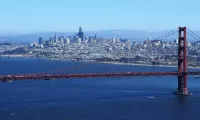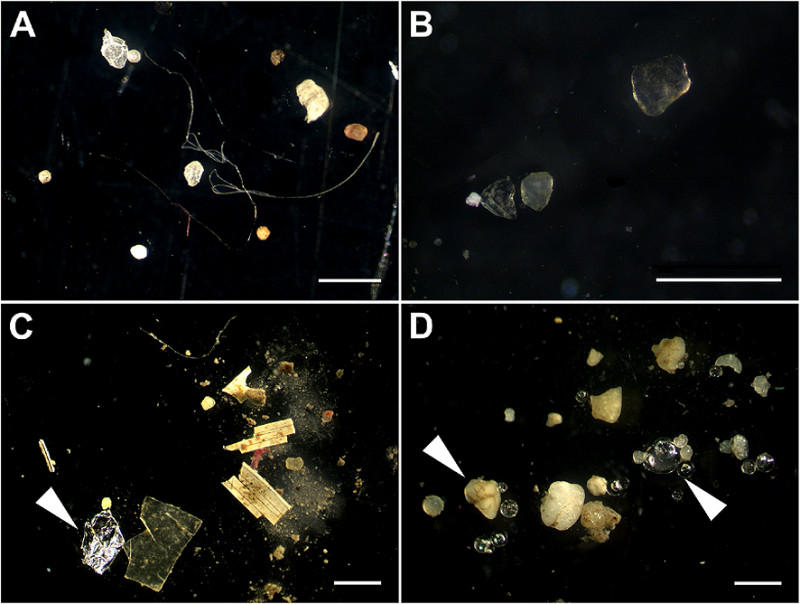Microplastics are synthetic, solid, water-insoluble particles ranging from 1 μm to 5 mm, originating from primary or secondary manufacturing processes. They pose a threat to both human health and the environment due to the presence of harmful chemicals that can leach into the air, water, and food supply. Their widespread presence raises concerns about potential long-term ecological and health consequences.
1960: Increase in Plastic Pellet Production in the United States
In 1960, plastic pellet production in the United States was 2.9 million pellets.
1970: Commercial Shipping Fleets Dump Plastic Waste
In 1970, commercial shipping fleets around the world dumped over 23,000 tons of plastic waste into the marine environment.
1987: Increase in Plastic Pellet Production in the United States
By 1987, plastic pellet production in the United States had increased to 21.7 million pellets.
1987: Marine Plastic Pollution Research and Control Act
In 1987, the Marine Plastic Pollution Research and Control Act prohibited discharge of plastics in the sea in the United States.
1988: International Agreement Prohibiting Waste Dumping from Ships
In 1988, an international agreement (MARPOL 73/78, Annex V) prohibited the dumping of waste from ships into the marine environment.
1998: Microplastic Fibers as Indicator of Sewage
In 1998, a study suggested that microplastic fibers would be a persistent indicator of sewage sludges and wastewater treatment plant outfalls.
2004: Introduction of the Term "Microplastics"
In 2004, the term "microplastics" was introduced by Professor Richard Thompson, a marine biologist at the University of Plymouth in the United Kingdom, marking the official naming of this pollutant.
2008: International Research Workshop Concluded Microplastics Were a Problem
In 2008, an International Research Workshop at the University of Washington at Tacoma concluded that microplastics were a problem in the marine environment. This conclusion was based on the documented occurrence of microplastics, their long residence times, the likelihood of future buildup, and evidence of ingestion by marine organisms.
2009: Plastic Found in Antarctic Sea Ice
In 2009, plastic was found in Antarctic sea ice for the first time, with 96 microplastic particles from 14 different types of polymers in an ice core sampled from east Antarctica.
2011: First Study on Microplastics in Freshwater Ecosystems
In 2011, the first study on microplastics in freshwater ecosystems was published, finding an average of 37.8 fragments per square meter of Lake Huron sediment samples.
July 2012: Spillage of Nurdles off the Coast near Hong Kong
On 24 July 2012, 150 tonnes of nurdles and other raw plastic material spilled from a shipping vessel off the coast near Hong Kong after a major storm. This waste from the Chinese company Sinopec was reported to have piled up in large quantities on beaches.
August 9, 2012: Haitian government prohibits polyethylene bags
On August 9, 2012, the Haitian government issued a decree banning the production, importation, marketing, and use of polyethylene bags and expanded polystyrene objects intended for foodstuffs.
2012: WHO projects 3 million deaths in 2012 due to air pollution
In 2012, the World Health Organization projected that 3 million deaths would be caused by air pollution, with 3-7% of particulate matter (PM2.5) estimated to consist of tire wear and tear.
February 2013: EPA Launches Trash-Free Waters Initiative
In February 2013, the U.S. Environmental Protection Agency (EPA) launched its "Trash-Free Waters" initiative to prevent single-use plastic wastes from ending up in waterways and ultimately the ocean.
April 2013: The Garbage Patch State Founded by Maria Cristina Finucci
In April 2013, Italian artist Maria Cristina Finucci founded The Garbage Patch State to create awareness, under the patronage of UNESCO and the Italian Ministry of the Environment.
July 10, 2013: Haiti reinforces ban on polystyrene articles
On July 10, 2013, a second decree was published in Haiti, reiterating the prohibition on the importation, production, or sale of expanded polystyrene articles for food use.
2014: Estimation of Microplastic Quantity in Oceans
In 2014, it was estimated that there were between 15 and 51 trillion individual pieces of microplastic in the world's oceans, weighing between 93,000 and 236,000 metric tons.
December 2015: Microbead-Free Waters Act Signed into Law in the US
In December 2015, President Barack Obama signed the Microbead-Free Waters Act 2015 into law in the US. The law bans "rinse-off" cosmetic products that perform an exfoliating function, such as toothpaste or face wash.
2015: Norwegian Environment Agency Review on Microplastics
A 2015 review by the Norwegian Environment Agency suggested classifying microplastic sources as primary, particularly those resulting from human activity and product use, distinguishing them from secondary microplastics formed by fragmentation in nature.
2015: Microplastics in Table Salts Study
A 2015 review of 15 brands of table salts commercially available in China found microplastics were much more prevalent in sea salts compared to lake, rock, or well salts.
2015: Shift to Metallized-Plastic Glitter in Cosmetics
After the Microbead-Free Waters Act of 2015, many industries shifted toward using FDA-approved "rinse-off" metallized-plastic glitter as their primary abrasive agent in toothpaste and other rinse-off cosmetic products.
2016: Microplastic Removal During Primary Wastewater Treatment
A 2016 study showed that most microplastics are removed during the primary treatment stage where solid skimming and sludge settling are used.
July 2017: Microbead-Free Waters Act Takes Effect for Manufacturing
On July 1, 2017, the Microbead-Free Waters Act took effect in the US, with respect to manufacturing of rinse-off cosmetic products containing microplastics.
2017: Study on Indoor Airborne Microfiber Concentrations
A 2017 study found indoor airborne microfiber concentrations between 1.0 and 60.0 microfibers per cubic meter, 33% of which were found to be microplastics.
2017: IUCN Report on Microplastics in the Great Pacific Garbage Patch
According to a 2017 IUCN report, microplastics could contribute up to 30% of the Great Pacific Garbage Patch and are a bigger source of marine plastic pollution than larger pieces of marine litter in many developed countries.
2017: Estimate of Microplastic Ingestion from Seafood
According to a 2017 estimate, a person who consumes seafood will ingest 11,000 bits of microplastics per year.
2017: England bans microbeads in rinse-off personal care products
In 2017, The Environmental Protection (Microbeads) (England) Regulations 2017 were introduced, prohibiting the production of rinse-off personal care products (like exfoliants) containing microbeads. Non-compliance can result in fines, stop notices preventing further production until regulations are met, and potential criminal proceedings.
2017: Microplastics Found on Seagrass in Turneffe Atoll
In 2017, marine biologists discovered that three-quarters of the underwater seagrass in the Turneffe Atoll off the coast of Belize had microplastic fibers, shards, and beads stuck to it. The plastic pieces had been overgrown by epibionts. The findings, published in Marine Pollution Bulletin, were the first discovery of microplastics on aquatic vascular plants.
2017: Smallest Microplastic Detected in Oceans
In 2017, the smallest microplastic reportedly detected in the oceans was 1.6 micrometres in diameter.
January 2018: Haiti deploys specialists to enforce ban on polystyrene articles
In January 2018, the ministries of the Environment, Justice and Public Security, Trade and Industry, and Economy and Finance in Haiti announced that specialists would be deployed to enforce the decree prohibiting the use of expanded polystyrene articles for food, which was initially published on July 10, 2013.
April 2018: European Commission addresses microplastic concerns
In April 2018, the European Commission acknowledged the growing concern regarding the environmental impact of microplastics. Consequently, the Commission's Group of Chief Scientific Advisors commissioned a comprehensive review of existing scientific evidence on microplastic pollution through the EU's Scientific Advice Mechanism.
June 2018: Japan passes bill to reduce microplastic pollution
On 15 June 2018, the Japanese government passed a bill aimed at reducing microplastic production and pollution, particularly in aquatic environments. Proposed by the Environment Ministry, the bill is the first in Japan to specifically target microplastic reduction in the personal care industry, with products like face wash and toothpaste. The law also emphasizes increased recycling education and public awareness. However, the June 2018 legislation lacks penalties for manufacturers continuing to use microplastics.
July 2018: Microbead-Free Waters Act Takes Effect for Interstate Commerce
On July 1, 2018, the Microbead-Free Waters Act took effect in the US, with respect to introduction or delivery for introduction into interstate commerce of rinse-off cosmetic products containing microplastics.
July 2018: Microplastic Reduction Amendment Passed by US House
On July 25, 2018, a microplastic reduction amendment was passed by the U.S. House of Representatives as part of the Save Our Seas Act. The legislation supports NOAA's Marine Debris Program and promotes NOAA's Great Lakes Land-Based Marine Debris Action Plan to increase testing, cleanup, and education around plastic pollution in the Great Lakes.
October 2018: Save Our Seas Act Signed into Law
On October 11, 2018, President Donald Trump signed the re-authorization and amendment bill of the Save Our Seas Act into effect.
2018: EPA Collaborates to Reduce Trash in the Caribbean Sea
As of 2018, the EPA collaborated with the United Nations Environment Programme–Caribbean Environment Programme (UNEP-CEP) and the Peace Corps to reduce and remove trash in the Caribbean Sea. EPA also funded various projects in the San Francisco Bay Area to reduce the use of single-use plastics, such as disposable cups, spoons, and straws, from three University of California campuses.
2018: China Bans Import of Recyclables, Yangtze River Pollution
In 2018, China banned the import of recyclables from other countries, forcing those countries to re-examine their recycling schemes. The Yangtze River in China contributes 55% of all plastic waste going to the seas.
2018: Launch of the Clean Oceans Initiative
In 2018, the European Investment Bank, Agence Française de Développement, and KfW Entwicklungsbank launched the Clean Oceans Initiative to provide up to €2 billion to develop projects that remove pollution from waterways before it reaches the oceans.
January 2019: Evidence review delivered to European Commission
In January 2019, a scientific evidence review, conducted by a working group nominated by European academies, was delivered to the European Commission. The review was commissioned in April 2018 and formed the basis for a Scientific Opinion presented to the Commission later in 2019, which will inform potential policy changes to address microplastic pollution at the European level.
January 2019: ECHA proposes restriction on intentionally added microplastics
In January 2019, the European Chemicals Agency (ECHA) proposed measures to restrict the use of intentionally added microplastics.
2019: Microplastic Particle Count in Sugar, Salt, and Bottled Water
A 2019 study found a kilo of sugar had 440 microplastic particles, a kilo of salt contained 110 particles, and a litre of bottled water contained 94 particles.
2019: Microplastic Biofilms and Pathogen Spread
According to a 2019 study, microbes living on the surface of microplastics form biofilms that pose a unique risk by providing a novel habitat for colonization. This increases overlap between species, potentially spreading pathogens and antibiotic-resistant genes through horizontal gene transfer. The rapid movement of microplastics in waterways can also spread pathogens to new locations.
2019: Fionn Ferreira Develops Microplastic Removal Device
In 2019, Fionn Ferreira, winner of the Google Science Fair, is developing a device for the removal of microplastic particles from water using a ferrofluid.
2019: European Union Report on Microplastic Presence
In 2019, a comprehensive review by the European Union's Scientific Advice Mechanism indicated that microplastics were present in every part of the environment. The review also noted that while widespread ecological risks from microplastic pollution were not yet evident, these risks were likely to become widespread within a century if pollution continued at the current rate.
2019: Global Plastic Production Statistics
In 2019, plastic world production was 368 million tonnes, with 51% produced in Asia and China being the world's largest producer, creating 31% of the world total.
2019: Microplastics Found in Amphibians and Birds
In 2019, the first European records of microplastic items in amphibians' stomach content were reported in specimens of the common European newt (Triturus carnifex). This also represented the first evidence for Caudata worldwide, highlighting that the emerging issue of plastics is a threat even in remote high-altitude environments. Microplastics have also been found in common blackbirds (Turdus merula) and song thrushes (Turdus philomelos), indicating their ubiquity in terrestrial environments.
February 2020: Presence of Face Masks in Hong Kong Ocean
In February 2020, Oceans Asia confirmed "the presence of face masks of different types and colors in an ocean in Hong Kong", indicating a new source of microplastic pollution due to the COVID-19 pandemic.
June 2020: California Adopts Definition of 'Microplastics in Drinking Water'
On June 16, 2020, California adopted a definition of 'microplastics in drinking water', setting the foundation for a long-term approach to studying their contamination and human health effects.
October 2020: New Partners Join the Clean Oceans Initiative
In October 2020, Cassa Depositi e Prestiti (CDP) and the Instituto de Crédito Oficial (ICO) became new partners in the Clean Oceans Initiative.
2020: Microplastics Detected in Freshwater Systems Globally
As of 2020, microplastics had been detected in freshwater systems across Europe, North America, South America, Asia, and Australia. Samples collected from 29 Great Lakes tributaries in the United States were found to contain plastic particles, 98% of which were microplastics. These microplastics were also discovered in high mountain environments, far from their original sources.
2020: Microplastics Found in Deep Ocean Sediment
Deep layer ocean sediment surveys in China during 2020 revealed the presence of plastics in deposition layers that predate the invention of plastics. This discovery suggests that microplastic levels in surface sample ocean surveys may be underestimated.
2020: Microplastics Exposure from Infant Feeding Bottles
In 2020, researchers reported that polypropylene infant feeding bottles with contemporary preparation procedures were found to cause microplastics exposure to infants ranging from 14,600 to 4,550,000 particles per capita per day in 48 regions.
January 2021: European Investment Bank and Asian Development Bank form Partnership
In January 2021, the European Investment Bank and the Asian Development Bank had formed the Clean and Sustainable Ocean Partnership to promote cooperative projects for a clean and sustainable ocean and blue economy in the Asia-Pacific region.
September 2021: Hurricane Larry Deposits Microplastics
In September 2021, during its peak, Hurricane Larry deposited 113,000 particles/m/day of microplastics as it passed over Newfoundland, Canada. Analysis suggested the microplastics originated from the North Atlantic garbage patch.
2021: Silicone Rubber Baby Bottle Nipple Degradation
In 2021, research found that silicone rubber baby bottle nipples degrade over time from repeated steam sterilization, shedding micro- and nano-sized particles of silicone rubber. It was estimated that, using such heat-degraded nipples for a year, a baby will ingest more than 660,000 particles.
2021: Research reveals fish ingest microplastics inadvertently rather than intentionally.
In 2021, research revealed that fish ingest microplastics inadvertently rather than intentionally. The first documented case of bioaccumulation of micro and nanoplastics in wild animals occurred in the skin mucosa of salmon, attributed to the resemblance between nanoplastics and virus outer shells.
February 2022: Clean Oceans Initiative Increases Financing Aim
In February 2022, the Clean Oceans Initiative announced it would increase its financing aim to €4 billion by the end of 2025. At the same time, the European Bank for Reconstruction and Development (EBRD) became the Clean Oceans Initiative's sixth member.
February 2023: Clean Oceans Initiative Reaches 65% of its Goal
By February 2023, the Clean Oceans Initiative program had met 65% of its goal, with €2.6 billion spent in 60 projects benefiting more than 20 million people across Africa, Asia, Latin America, and Europe.
October 2023: REACH restriction on synthetic polymer microparticles enters into force
On 17 October 2023, the REACH restriction on synthetic polymer microparticles came into effect.
December 2023: Clean Oceans Initiative Funds Projects
As of December 2023, The Clean Oceans Initiative had funded almost €3.2 billion, exceeding 80% of its €4 billion objective. Over 20 million people were supposed to benefit from the signed project proposals.
2023: Microplastic Cycle Not Fully Known
As of 2023, the cycle and movement of microplastics in the environment was not fully known. Deep layer ocean sediment surveys in China found that plastics are present in deposition layers far older than the invention of plastics.
2023: Rapid Growth of Microplastic Pollution Research
As of 2023, there was rapid growth of microplastic pollution research, with marine and estuarine environments most frequently studied. Researchers have called for better sharing of research data that might lead to effective solutions.
2023: Study on Microplastic Composition in Fish
In 2023, a study tested some fish species and found that "about 80% of the MPs detected were fibrous in shape and were made of polyethylene (25%), polyester (20%), and polyamide (10%). Most microplastic particles observed were black (61%) or blue (27%) in color."
2023: Discovery of Plasticosis in Seabirds
In 2023, plasticosis, a new disease caused solely by plastics, was discovered in seabirds who had scarred digestive tracts from ingesting plastic waste. When birds ingest small pieces of plastic, it inflames the digestive tract, causing tissues to become scarred and disfigured, affecting digestion, growth and survival.
2023: Microplastic Exposure Impairs Cognitive Performance of Hermit Crabs
Research published in 2023 demonstrated that microplastic exposure impaired the cognitive performance of hermit crabs, which could potentially impact their survivability.
2024: Hong Kong Implements Plastic Restriction Regulation
In 2024, the Hong Kong government implemented the first phase of its plastic restriction regulation. Promotional videos have also been produced to encourage citizens to bring their own utensils when dining out, to refrain from using disposable utensils, and to bring their own shopping bags when shopping. Merchants are prohibited from providing related plastic products to customers.
2025: United Nations Sustainable Development Goal 14 Target
Global advocacy aimed at achieving the target of the United Nations Sustainable Development Goal 14 hopes to prevent and significantly reduce all forms of marine pollution by 2025. The Florida Microplastic Awareness Project (FMAP), is a group of volunteers who search for microplastics in coastal water samples.
2025: Clean Oceans Initiative Aims for Financing of €4 billion by the end of 2025
In February 2022, the Clean Oceans Initiative stated that it would increase its financing aim to €4 billion by the end of 2025.
Mentioned in this timeline

Donald John Trump is an American politician media personality and...
The United States of America is a federal republic located...

Google LLC is a multinational technology company specializing in online...
California is a U S state on the Pacific Coast...
Hong Kong is a Special Administrative Region of the People's...

San Francisco is a major commercial financial and cultural hub...
Trending
Keldon Johnson is an American professional basketball player currently playing for the San Antonio Spurs in the NBA Prior to...

9 months ago Bobby Portis: From Turmoil to Triumph, Focused on Bucks Playoff Series

2 months ago Spoelstra regrets Ware decision after Heat loss; Knecht as superstar solution?

8 months ago Paolo Banchero's NBA Journey: Overcoming Injury, Praising Teammates, and Hope for the Future
2 months ago Kat Timpf: Libertarian Columnist and Fox News Personality

9 months ago Sports Updates: Arias benched, Connaughton returns, Green sits, Rollins trending.
Popular

Stranger Things created by the Duffer Brothers is a popular...

XXXTentacion born Jahseh Dwayne Ricardo Onfroy was a controversial yet...

Kelsey Grammer is an accomplished American actor producer and singer...

Candace Owens is an American conservative political commentator and author...

Bernie Sanders is a prominent American politician currently serving as...

Marco Rubio is an American politician attorney and diplomat He...
